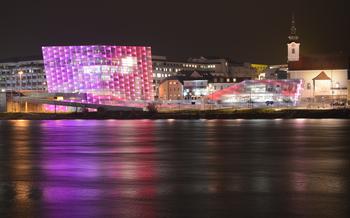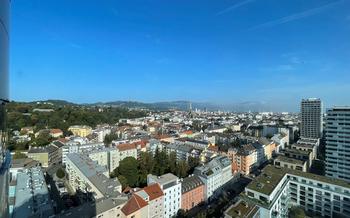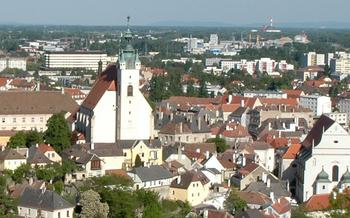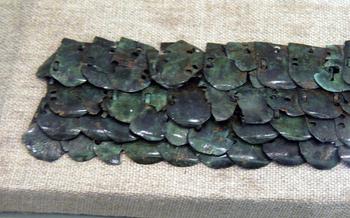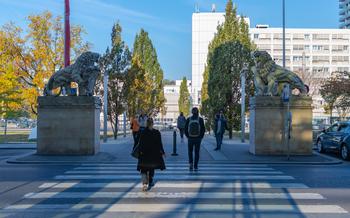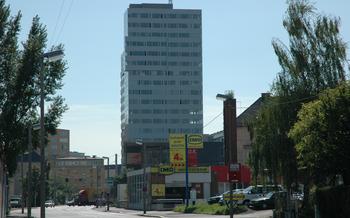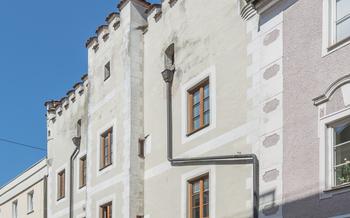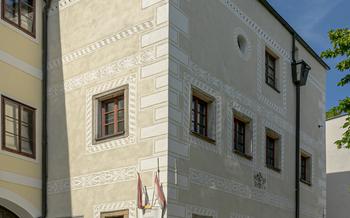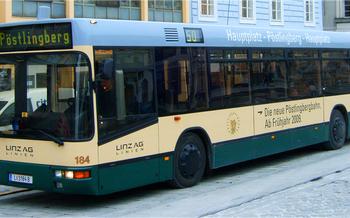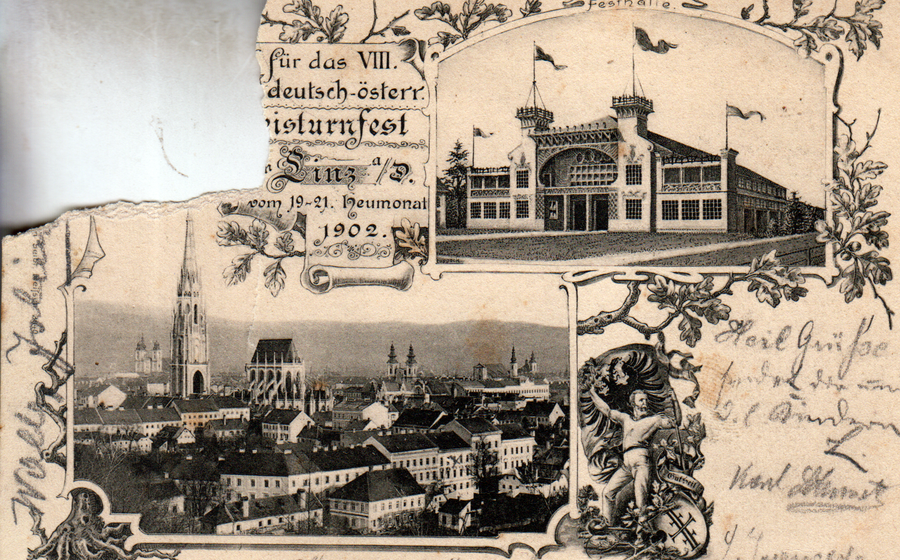
Hartheim Castle (near Linz)
- Hartheim Castle: A Dark Past, a Haunting Present:
- A Journey Through History: The Castle's Medieval Roots
- The Castle's Transformation: Renaissance Elegance and Baroque Grandeur
- A Place of Healing and Horrors: The Castle's Hospital and Sanatorium
- Resistance and Liberation: A Glimmer of Hope
- Post-War Trials and the Road to Justice:
- Memorialization and Remembrance: Honoring the Victims
- Exploring the Castle Grounds: A Walk Through History
- The Castle Museum: Unveiling the Past
- Guided Tours: Delving Deeper into the Castle's Secrets
- Accessibility and Practical Information
- Local Culture and Cuisine: Exploring the Region's Delights
- Insider Tip: Unveiling a Hidden Gem: Alkoven
Hartheim Castle: A Dark Past, a Haunting Present:
Hartheim Castle, situated near the city of Linz in Austria, bears witness to a chilling chapter in human history. It was one of six centers established by the Nazi regime as part of their systematic euthanasia program during World War II. The castle's tranquil exterior belies a dark past, as it served as a site of unspeakable horrors and atrocities.
The castle's transformation into a place of death and suffering is a somber reminder of the depths of human depravity. The lingering sense of tragedy that permeates the air creates an atmosphere that is both haunting and thought-provoking. Visiting the castle's museum is a powerful and emotional experience that confronts the dark legacy of the Nazi era and highlights the importance of remembrance and ethical reflection.
Practical information for visiting the castle's museum is readily available, allowing visitors to plan their visit and immerse themselves in the history and significance of Hartheim Castle. Guided tours provide a deeper understanding of the castle's past and the atrocities that took place within its walls, making it a profound and educational experience.
A Journey Through History: The Castle's Medieval Roots
Hartheim Castle's story begins in the 12th century, when it emerged as a fortified manor, strategically positioned to guard the region. Its sturdy walls and defensive structures reflected the tumultuous times of medieval Europe, where conflicts and power struggles were commonplace. Architectural features such as crenellated towers, thick walls, and a moat hinted at its military significance.
As the centuries passed, Hartheim Castle witnessed its share of battles and sieges, playing a pivotal role in regional power dynamics. It served as a stronghold for local lords, who used it to defend their territories and assert their authority. The castle's medieval origins left an indelible mark on its appearance, with remnants of its defensive architecture still visible today, offering a glimpse into a bygone era of knights, chivalry, and feudal conflicts.
However, the castle's medieval roots extended beyond its military significance. It also served as a center of administration and justice, where local disputes were settled, and alliances were forged. Its grand halls hosted feasts, celebrations, and gatherings, where the local nobility mingled, plotted, and made merry. Hartheim Castle became a symbol of power and prestige, deeply intertwined with the history and culture of the region.
The Castle's Transformation: Renaissance Elegance and Baroque Grandeur
During the Renaissance period, Hartheim Castle underwent a remarkable metamorphosis. The austere medieval fortress was transformed into an elegant and harmonious structure, reflecting the architectural ideals of the era. The castle's exterior was embellished with decorative elements, such as intricate carvings and ornate window frames, which added a touch of sophistication and refinement.
Inside the castle, the transformation was equally impressive. The once-fortified rooms were adorned with beautiful frescoes, tapestries, and paintings, creating a sense of luxury and opulence. The grand halls and chambers were redesigned to accommodate the lavish lifestyle of the aristocratic owners, who hosted lavish banquets, balls, and other social gatherings.
The Baroque era brought further embellishments to the castle. The interiors were adorned with elaborate stucco work, gilded ornaments, and magnificent chandeliers, creating a sense of grandeur and theatricality. The castle's gardens were redesigned in the formal Baroque style, featuring symmetrical parterres, manicured lawns, and ornate fountains, which complemented the castle's architectural splendor.
During this period, Hartheim Castle became a showcase of aristocratic taste and wealth. The castle's owners, who belonged to prominent noble families, spared no expense in enhancing its beauty and grandeur. The castle's transformation reflected the cultural and artistic trends of the time, and it became a symbol of the aristocratic lifestyle and power.
A Place of Healing and Horrors: The Castle's Hospital and Sanatorium
In the 19th century, Hartheim Castle underwent a significant transformation, becoming a place of both healing and horrors. In 1898, a hospital was established within the castle grounds, providing medical care to the local community. The hospital gained a reputation for its progressive treatment methods, particularly in the field of psychiatry.
As the decades passed, the hospital's focus shifted towards the care of the mentally ill. In the early 20th century, it was transformed into a sanatorium, offering specialized treatment for various mental health conditions. The sanatorium was known for its tranquil surroundings and compassionate approach to patient care.
However, the castle's peaceful facade masked a dark secret. With the rise of the Nazi regime in Germany, Hartheim Castle became entangled in one of the most sinister chapters in human history. In 1940, the Nazis requisitioned the castle and transformed it into a center for their euthanasia program, known as Operation T
Resistance and Liberation: A Glimmer of Hope
Amidst the darkness of the Nazi occupation, there emerged pockets of resistance and acts of defiance. Individuals risked their lives to save victims from the clutches of the euthanasia program. Stories of courage and compassion unfolded within the castle walls.
In one instance, a nurse named Franziska Hrdlicka secretly helped patients escape from the castle. She provided them with civilian clothes and arranged for their transportation to safe houses. Her bravery saved numerous lives and became a beacon of hope in the face of despair.
Another act of resistance involved a group of local farmers who smuggled food and supplies into the castle. They risked their own safety to ensure that the patients had enough to eat and to provide them with a sense of humanity. Their actions demonstrated the enduring power of compassion and the resilience of the human spirit.
The liberation of Hartheim Castle in 1945 by Allied forces brought an end to the horrors that had taken place within its walls. The survivors who were found were given medical care and support, and the perpetrators were brought to justice. The castle's liberation marked a turning point in the history of Austria and a step towards confronting the atrocities of the Nazi regime.
Post-War Trials and the Road to Justice:
In the aftermath of World War II, the world grappled with the daunting task of bringing Nazi perpetrators to justice. The Nuremberg trials, held between 1945 and 1946, marked a significant step in this process. Among those tried were individuals directly involved in the euthanasia program, including the castle's former commandant, Franz Stangl. The trials presented immense challenges, as many perpetrators attempted to evade accountability or downplay their roles in the atrocities.
Despite these obstacles, the trials played a crucial role in confronting the horrors of the past and establishing a sense of justice. The testimonies of survivors and witnesses provided harrowing accounts of the atrocities committed at Hartheim Castle and other euthanasia centers. The trials also highlighted the systematic nature of the Nazi regime's crimes and the culpability of those who enabled and carried out the program.
The quest for justice extended beyond the Nuremberg trials. In subsequent years, national courts in Austria and Germany continued to prosecute Nazi perpetrators, including those involved in the euthanasia program. These trials, though often complex and protracted, contributed to a broader understanding of the Nazi regime's crimes and the need for accountability.
The road to justice was not without its challenges and setbacks. Some perpetrators evaded capture or prosecution, while others received relatively lenient sentences. The trials also raised questions about the extent to which individuals could be held responsible for crimes committed under orders or in the context of a totalitarian regime.
Despite these complexities, the post-war trials marked a significant step in confronting the dark legacy of the Nazi era. They served as a reminder of the importance of justice, accountability, and the fight against impunity. The trials also contributed to a broader understanding of the mechanisms of genocide and the need for vigilance against all forms of intolerance and discrimination.
Memorialization and Remembrance: Honoring the Victims
Hartheim Castle stands today as a solemn testament to the horrors of the past and a poignant reminder of the victims who lost their lives within its walls. In recognition of their suffering and the enduring impact of their tragedy, a memorial site has been established at the castle to honor their memory and educate future generations about the atrocities that occurred here.
Commemorative events and ceremonies are held regularly at the memorial site, bringing together survivors, their families, and members of the community to pay tribute to the victims. These events serve as a powerful reminder of the importance of remembering and honoring those who were lost, as well as the need to remain vigilant in the fight against intolerance and discrimination.
Educational initiatives play a crucial role in raising awareness about the atrocities committed at Hartheim Castle and the wider Nazi euthanasia program. Through guided tours, interactive displays, and educational programs, the memorial site seeks to inform visitors about the history of the castle and the victims who perished here. By shedding light on this dark chapter, the memorial site aims to prevent such tragedies from ever happening again.
Preserving the memory of those who were lost at Hartheim Castle is of paramount importance. The memorial site serves as a permanent reminder of the victims' lives and the suffering they endured. It is a place of reflection, remembrance, and reconciliation, where visitors can come to pay their respects, learn about the past, and honor the legacy of those who were taken before their time.
Exploring the Castle Grounds: A Walk Through History
Amidst the serene landscapes surrounding Hartheim Castle lies a captivating park that invites visitors to embark on a journey through time. manicured gardens, adorned with vibrant blooms, create a picturesque backdrop for leisurely strolls. Winding walking trails lead you through the castle grounds, unveiling historical landmarks and monuments that whisper tales of the past. As you wander amidst the tranquil ambiance, you can almost feel the echoes of history resonating through the air, inviting you to immerse yourself in the castle's rich and complex narrative.
The Castle Museum: Unveiling the Past
The Hartheim Castle Museum is a poignant testament to the castle's multifaceted history, with a particular focus on the dark chapter of the Nazi era. The museum's exhibits are both comprehensive and deeply moving, guiding visitors through the castle's transformation from a medieval fortress to a site of unspeakable horrors.
Artifacts, documents, and interactive displays bring the past to life, shedding light on the castle's role in the Nazi euthanasia program. Visitors can learn about the victims, their stories, and the systematic machinery of death that operated within these walls. The museum also explores the efforts of those who risked their lives to save victims and the challenges of bringing Nazi perpetrators to justice.
A visit to the Hartheim Castle Museum is a powerful and thought-provoking experience that confronts the horrors of the past and honors the memory of those who suffered. It serves as a reminder of the fragility of human rights and the importance of vigilance against intolerance and discrimination.
Guided Tours: Delving Deeper into the Castle's Secrets
To fully immerse yourself in the captivating history of Hartheim Castle, consider embarking on a guided tour. Led by knowledgeable and passionate guides, these tours offer an in-depth exploration of the castle's past, from its medieval origins to its sinister role during the Nazi era.
With their expertise, the guides provide insightful commentary, shedding light on the castle's architectural features, its former inhabitants, and the tragic events that unfolded within its walls. They will lead you through the various exhibits, explaining the historical context and significance of the artifacts on display.
Guided tours are available in multiple languages, ensuring that visitors from all over the world can delve into the castle's secrets. The guides encourage questions and foster interactive discussions, allowing you to gain a deeper understanding of the complex and often heart-wrenching history of Hartheim Castle.
Whether you're a history buff, a student, or simply someone seeking a profound and thought-provoking experience, a guided tour of Hartheim Castle is an absolute must. It's an opportunity to connect with the past, honor the victims, and gain a newfound appreciation for the triumph of the human spirit over adversity.
Accessibility and Practical Information
Hartheim Castle is situated just a short distance from the city of Linz, making it easily accessible by car or public transportation. The castle is open to the public for tours from Tuesday to Sunday, with guided tours available in multiple languages. Admission fees are reasonable, and booking in advance is recommended to secure your spot. Ample parking is available on-site, and there are dining options nearby for those who wish to grab a bite to eat before or after their visit. To make the most of your time, plan to spend at least a few hours exploring the castle and its grounds. Remember to wear comfortable shoes as there will be some walking involved. If you have any questions or require further information, don't hesitate to contact the castle's administration or visit their official website.
Local Culture and Cuisine: Exploring the Region's Delights
A visit to Hartheim Castle offers a profound historical experience, but it can also serve as a gateway to exploring the vibrant culture and cuisine of the region. Linz, the capital of Upper Austria, is renowned for its culinary scene, which blends traditional Austrian dishes with modern culinary influences.
Indulge in hearty classics like Wiener Schnitzel, a breaded and fried cutlet served with potato salad, or Tafelspitz, boiled beef served with horseradish sauce and chives. For a taste of local specialties, try Linzer Torte, a delicious lattice-topped cake filled with red currant jam, or Knödel, dumplings made with bread, flour, or potatoes and served with various sauces.
Venture into the surrounding countryside to discover hidden culinary gems. Visit traditional Gasthäuser (inns) and Heurige (wine taverns) to sample local wines and regional specialties. Don't miss the opportunity to savor fresh pastries and cakes at cozy cafes or indulge in a leisurely lunch at a riverside restaurant overlooking the picturesque Danube River.
Exploring the region's culinary delights is a wonderful way to complement your visit to Hartheim Castle. It allows you to immerse yourself in the local culture, appreciate the region's culinary heritage, and create lasting memories of your time in Upper Austria.
Insider Tip: Unveiling a Hidden Gem: Alkoven
A short distance from Hartheim Castle lies the charming town of Alkoven, a hidden gem waiting to be discovered. Step into its historic center, where cobblestone streets lead you past colorful buildings, each with a tale to tell. Admire the town's well-preserved architecture, a testament to its rich past.
Take a leisurely stroll along the Danube River, which flows serenely beside Alkoven. Inhale the fresh air and let the tranquility of the surroundings wash away your worries. Soak in the beauty of the riverbanks, where nature's artistry is on full display.
Alkoven offers a glimpse into the authentic Austrian way of life. Visit local markets to savor regional delicacies, such as freshly baked pastries, artisanal cheeses, and cured meats. Engage with the friendly locals, who are always eager to share stories and insights about their beloved town.
Combining a visit to Hartheim Castle with an exploration of Alkoven creates a well-rounded experience that immerses you in history, nature, and local culture. Discover the hidden treasures that await in this charming town, and let its allure captivate you.
